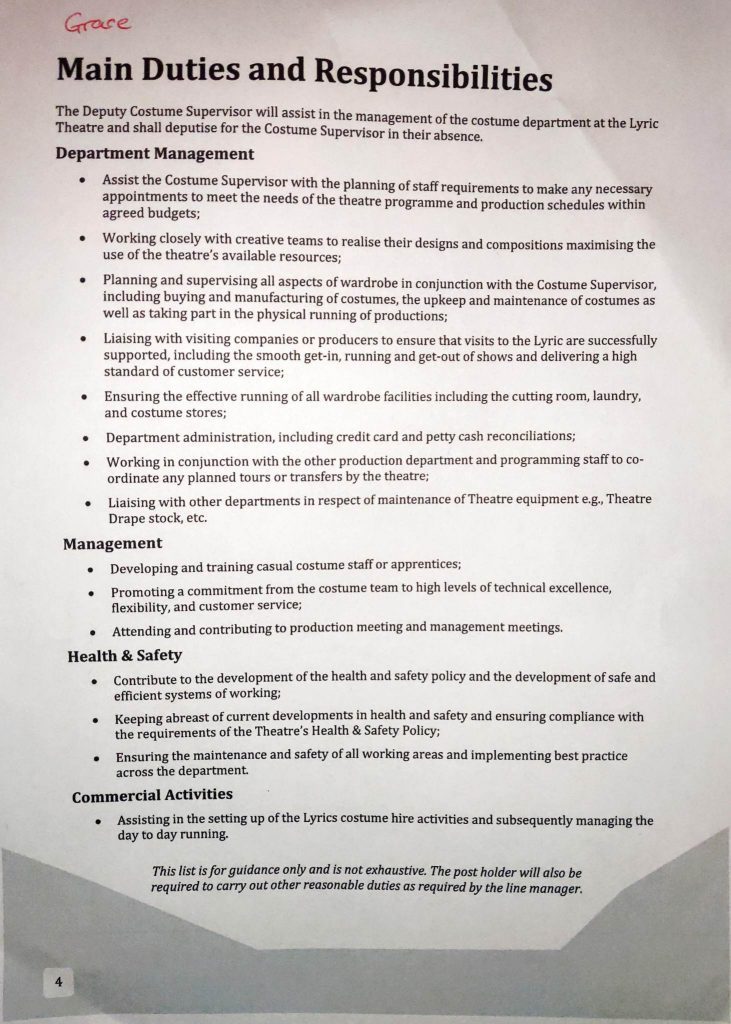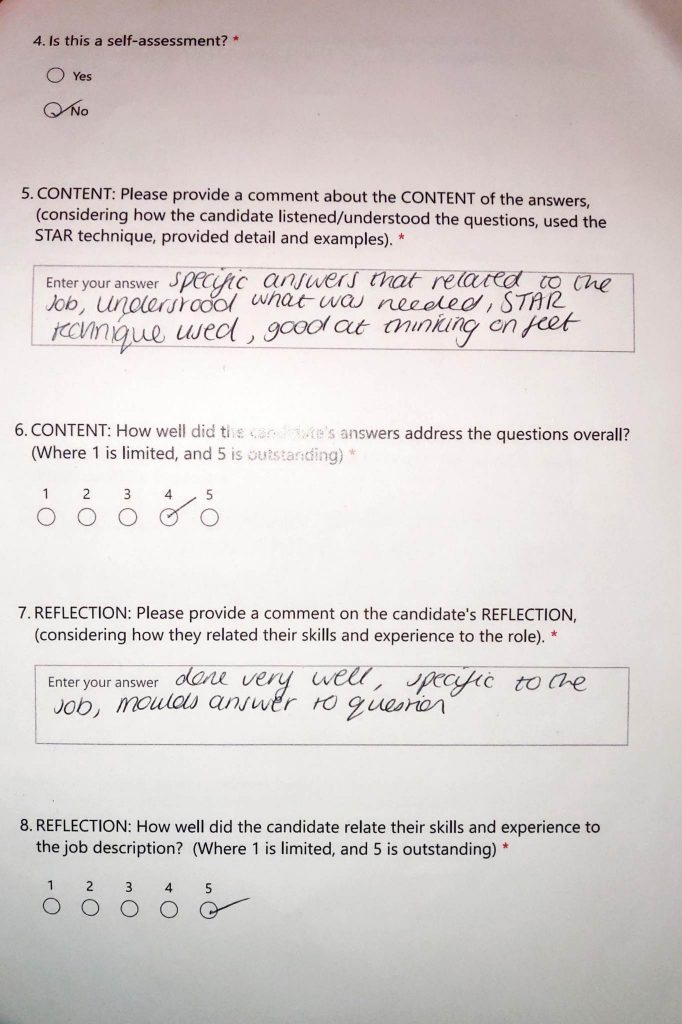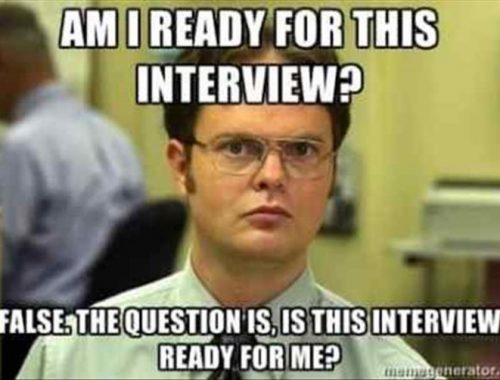Blog Post 2 – Simulated Interviews
Preparation
For our simulated interviews with our peers, we were required to research and decide on a real-world job opportunity specific to our chosen career paths. I aim to become a Costume Designer for various theatre companies after university so I looked into jobs specific to this role and found many all over the UK which was my chosen job area. However, to ensure I was giving myself the most realistic opportunity, I decided to go for a local theatre job as this would be the most pragmatic to me as a candidate, both because of its location, but also due to my familiarity with the theatre.
The job I opted for was the ‘Deputy Costume Supervisor’ role at the Lyric Theatre in Belfast. This job was a permanent position and would offer me the entry role I would need to progress in this industry. My role responsibilities included many things but those of the highest importance were:
- Planning and supervising all aspects of wardrobe in conjunction with the Costume Supervisor. (Theatre)
- Ensuring the effective running of all wardrobe facilities including the cutting room, laundry, and costume stores. (Theatre)
- Work closely with creative teams to realise their designs and compositions maximising use of the theatre’s available resources. (Theatre)

Using the Boud Model of Reflection to analyse my choice of job opportunity, I feel positive that I made a choice so close to my real-life career desire, however I could have emailed the Lyric Theatre to further explore what qualities they would look for in a canditate and adjust my research accordingly. This changed my perspective on how I could cater myself to fit the job description more efficiently.

During our simulated interview, I was sure to enter the room confidently, but without arrogance. Costume designers are responsible for making important decisions regarding theatre budgets, wardrobe specifications, and health and safety within a quick turn-over period. I feel this approach worked best as not only did I present myself as a determined and confident decision maker but by adding the extra touch of a kind smile, maintaining eye contact, and a handshake with each of my ‘interviewers’, I had made a good first impression.
Why Did You Apply For This Role?
To show the range of questions I was asked I have decided on the two most important to showcase the various skills I exhibited in the interview.
I was first asked ‘Why did you apply for this role?’
I began by explaining my love of the fashion industry as a whole and my experience with dressmaking, sewing, crocheting, and knitting. I feel this gave me a certain edge that other potential candidates would not have to ensure I stood out to those on the panel. This also allowed me to exemplify the practical experience I have working in creative design and showcased my technical skills specific to this job.
To hone in more on the specifics of the job, I related my passion and inspiration for dressmaking to the costumes I had seen in various Lyric Theatre performances and how I admired them. I felt that this offered a personal relatability to those in front of me and would show my familiarity with this specific theatre. I also felt that showing kindness and appreciation for the work of those on the panel made me memorable as a candidate. In a real-world scenario this would set me apart from other applicants and through my peer-reviewed worksheet, I was able to answer the questions asked while relating frequently to the job title and roles/responsibilities I would have.
Could you give me an example of a challenge you faced and explain how you overcame it?
This question was one I had anticipated as I had done previous research into the most common interview questions and ways for the interviewee to balance personal experience with a professional standard. I learned of the STAR technique (Situation, Task, Action, Result) (Service) and used this as my basis for answering such questions. I feel this approach worked best for the job I was applying for and I was able to cater my experience to the question efficiently.
I began by explaining a scenario wherein an actor on stage for a show I was acting in had a wardrobe malfunction during a scene and her dress strap snapped. There were no costume designers on the side of the stage we were at but I had prepared in case of an emergency and brought my own travel sewing kit in a small bag I kept in the stage wings. Whilst the rest of the scene played on I was able to quickly and safely sew the strap back to the dress while the actor rested a moment before heading back out to the stage. The costume lasted until the interval wherein we were able to fully repair the strap. I feel this example showed not only a relatability to the experience of sewing the job application required but also showcased qualities and skills I had not realised until I saw them on my peer-review sheet.
- I used efficient language when using the STAR technique to explain this challenge.
- I demonstrated determination, focus and calmness safely in a stressful and time-dependent experience.
- I was able to mould my answer specifically to the question.

Overall, there is little I would change about my simulated interview. However, it was noted that I often fidgeted in my seat during the interview and whilst this was put down to nerves, I think if we were to do the interviews again I would be more conscious of my movements and make deliberate gestures when needed. A key aspect for me would also be to take my time answering questions to ensure as best I could that I am the right person for this role.
Bibliography
Service, National Careers. Interview Tips. n.d. Web. 12 2 2023.
Theatre, Lyric. Deputy Supervisor Role. 2022 December 12. Web. 3 January 2023.
You May Also Like

Job Interviews: Selling Yourself For A Pay Cheque
24 February 2023
Working with a Production House
30 November 2022
